The largest seafood market in Korea, Busan’s Jagalchi Market is worth exploring, whether to dine or simply observe the hustle, as fish mongers clean and hawk the day’s catch. Even the streets surrounding the market are memorable, lined with vendors busily working and vying for customers’ attention.
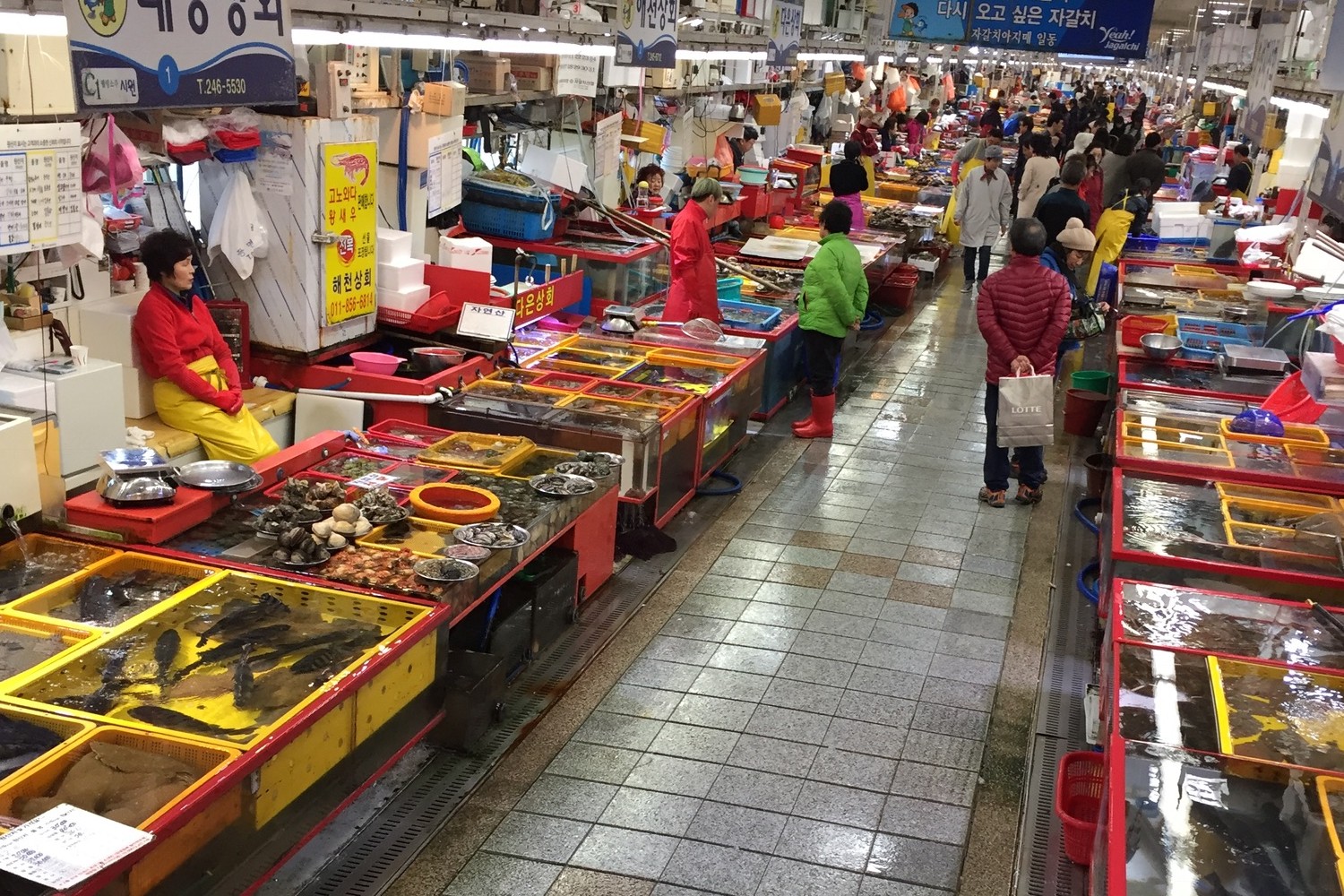
Jagalchi Fish Market (Photo: Patricia Cambel)
The first time I visited Busan’s iconic Jagalchi Fish Market, I did not eat. Instead, I walked by the vendors lining the streets outside in awe, then down the massive warehouse’s aisles, flanked by stalls selling sea life of myriad colors and shapes, some still whole on ice, some splayed, some dried, and some in tanks, still very much alive.
As I perused, I took care not to step in any puddles on the grey, tile floor. What is that? Whoa! And, that? On sensory overload, my brain tried in vain to make connections. Is that red and yellow bumpy bulb a plant or animal? Looks like a prickly pear. At one point, I stopped, rapt with curious wonder. What. Is. That?
I tried not to look too long, or worse, gawk, at the beige, hot dog-shaped tank dwellers, stacked atop each other, like a pile of fat fingers. Or, truly, penises. I sucked my eyes back into their sockets and stifled a giggle.
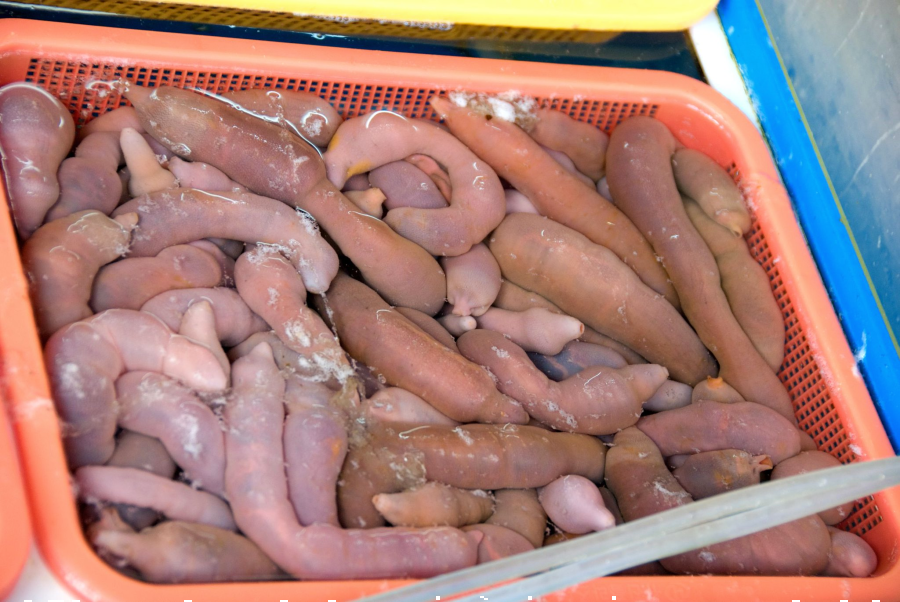
Chewy, and slightly sweet, penis fish, or “gaebul” (개불), is often eaten raw (Photo: Dennis Crabtree via Flickr / CC BY-NC-ND 2.0)
At the time, I lived in Japan and had re-learned the lesson that what is normal to me is not normal to everyone, and vice versa. A lesson I thought I’d learned in childhood, only to have to re-realize my biases yet again. And, being fallibly human, will likely learn again in the future.
For example, while hiking with a group of elderly Japanese women, our talk turned toward toilets. Having grown up in the States, I was not used to opening restroom doors to find a porcelain hole in the ground and had wound up holding it on a few occasions, until I perfected my squat and aim. When asked if they preferred squatters or toilets, my friends agreed: the former in public and the latter in private.
“Really?” I’d asked, surprised.
“Who would want their bottom to touch where strangers’ bottoms had been?” one responded.
Touché. I must admit that I began using the squatters more often thereafter.
So, while off-putting, who was I to assume these fingerling creatures were not utterly divine?
Still, unlike the spicy, fried and sweet snacks hawkers sold in the street market nearby, most of this smorgasbord of sea life was not tempting, not just because of their curious appearance. I was around five months pregnant and fearful of eating soft cheeses, let alone Ursula’s compatriots, especially when I didn’t know how they would be cooked, if at all.
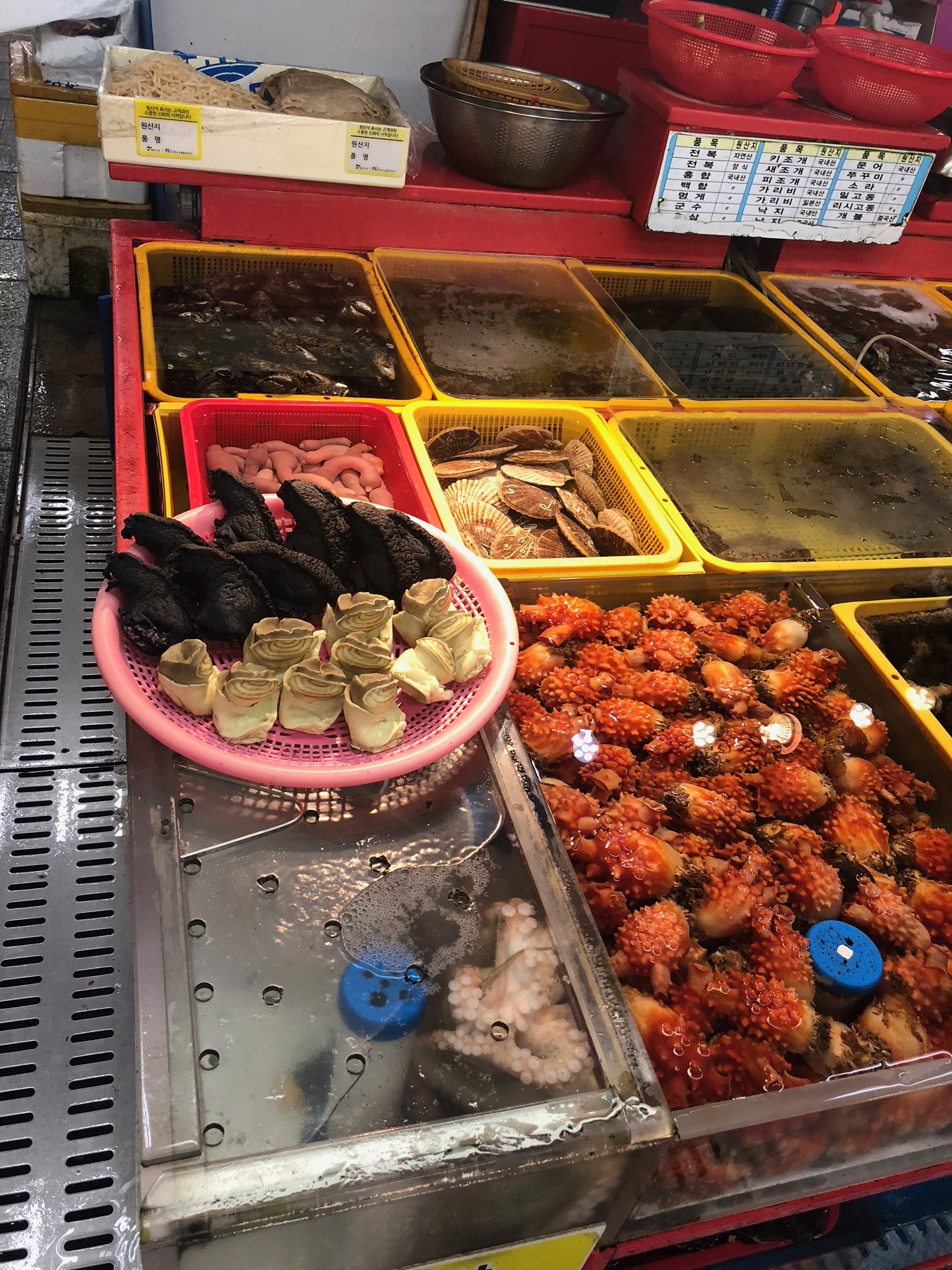
The market’s bounty (Photo: Patricia Cambel)
Pregnancy aside, the traveler in me remained curious. I had read that you can simply approach a vendor, point at the creature you crave, and have it prepared for you on the spot. Therein lies the market’s appeal.
I, indecisive over even familiar flavors, had no clue to what I would point. The red one with the big eyes or that flat flounder? Could I finish that massive crab, far larger than my face, by myself?
It didn’t help that my senses, already piqued by pregnancy, struggled to take everything in at once. The pungent, salty scent of the sea and freshly splayed fish filled the air, as did the sounds of hawking, bargaining and raucous groups having fun in the eateries upstairs. Oh, to be up there, with a group of friends, sitting on the floor, clinking glasses between bites. I craved not just the fish, but that boisterous laughter too, the whole experience.
Alone, though, the prospect of actually buying something remained intimidating, even as each apron- and glove-clad vendor I passed smiled, showcasing their similar bounty, beckoning me to take a closer look. Knowing I would freeze as soon as I even attempted to barter, I smiled, then exited the market, snapped a few quick photos of the vendor-lined streets, and left, questioning my bashfulness as soon as I boarded the bus. As other passengers boarded, I looked out the window at the crowded market street, instantly regretting the missed chance to experience this local tradition.
Another Chance
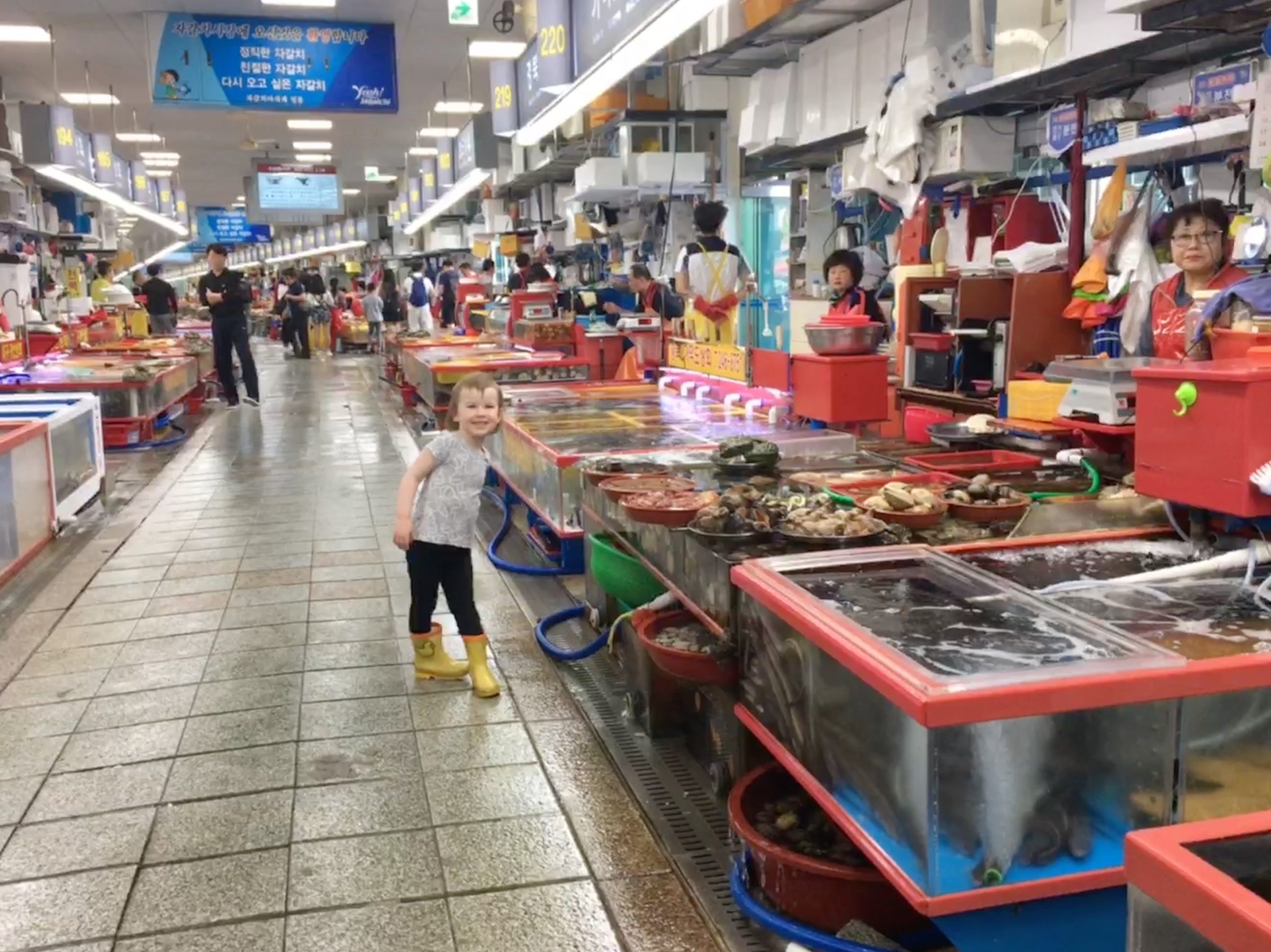
Emi, probably thinking she is at an aquarium (Photo: Bre Power Eaton for TravelMag.com)
To my surprise, I would not just return to Busan, but move there three years later. The market became one of my family’s favorite spots to take visitors to experience the culture in its most concentrated form – vibrant, hardworking and fun-loving. Each time we took a friend or family member, we had the chance to see the market through fresh eyes, as they stood still, entranced by the hectic mix of sights, sounds and scents.
When I had first visited, my longing for that fresh fish experience was matched by a desire to talk with the fish mongers, to learn more about them and their work: where they caught the fish, when and how; whether it was a family business, passed down for generations. As a traveler, I am drawn to each new location, yes, but as a writer, I am also drawn to people, the beating hearts that transform the land and build the history, culture and sense of each place. When we moved to Korea, I had hoped to learn the language, but struggled to remember how to say hello or ask for one, two, or three items, thank you.
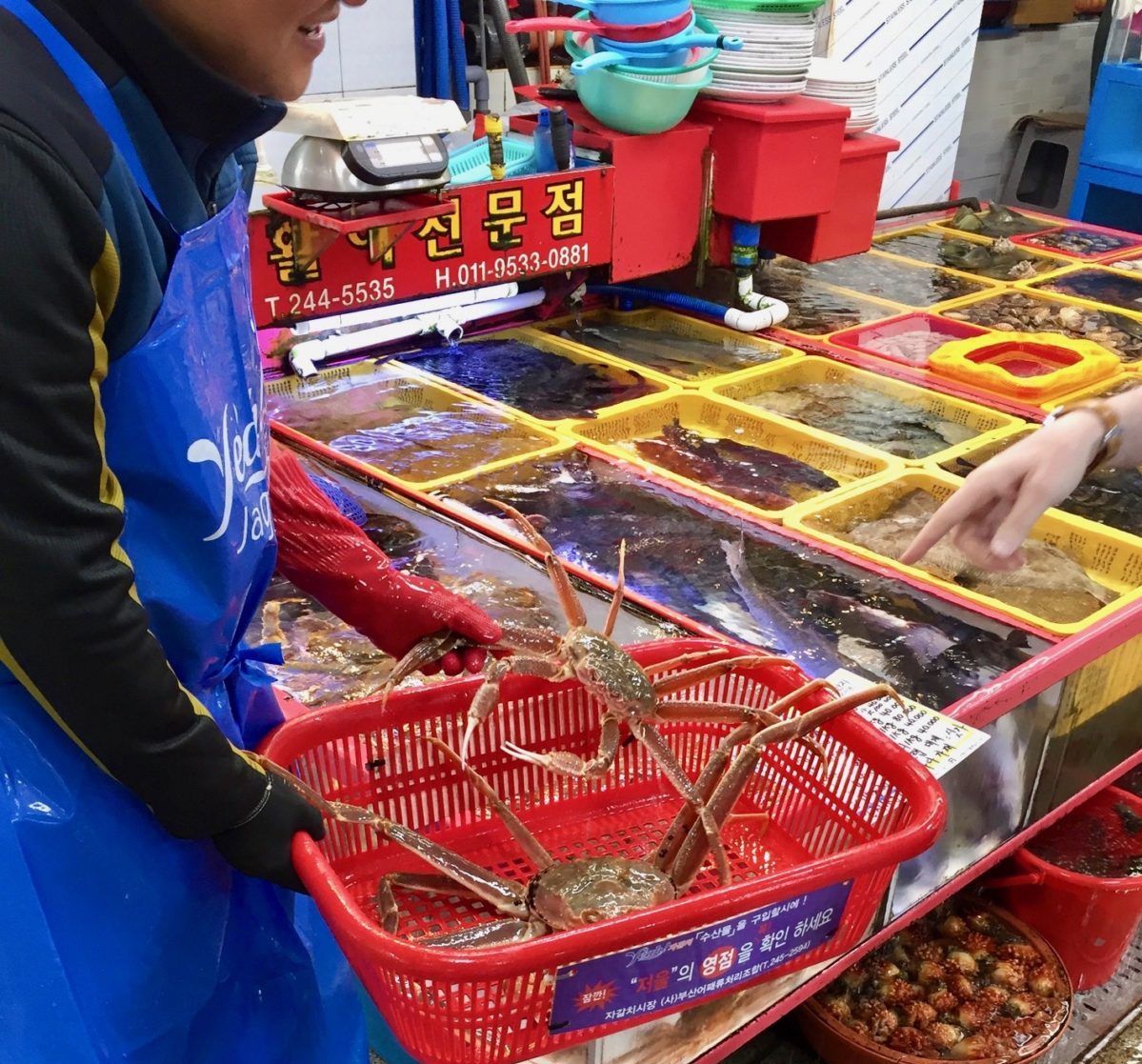
Selecting a crab (Photo: Bre Power Eaton, for TravelMag.com)
Luckily, each time, vendors approached us speaking English, then patiently helped us choose the right amount of fish, crab or shellfish to feed our group, along with suggesting how to eat it: raw, grilled or steamed. The first time, we had no idea what to do after selecting our bounty, so a staff member graciously led us upstairs to the eating area, which I had missed out on during my first visit.
Equally as packed as the market on the ground floor, the dining area was separated into eateries, many with gurgling, life-filled fish tanks of their own. Couples and groups sat on the floor at low tables or on plastic chairs at tables, lined in rows and covered with plastic tablecloths.
Over time, we realized that each vendor was connected to an eatery upstairs, and each visit, we tried a different one. My eyes always ogled the tables we passed, trying to memorize the dishes so I could match them with those I saw on the picture menus the waitress handed us when we sat down. Traditional black bowls, set over a flame, filled with bubbling soup; large round platters, topped with thinly sliced raw fish; small dishes of banchan, side dishes, like pickled vegetables and marinated fish, added all the more color and flavor.
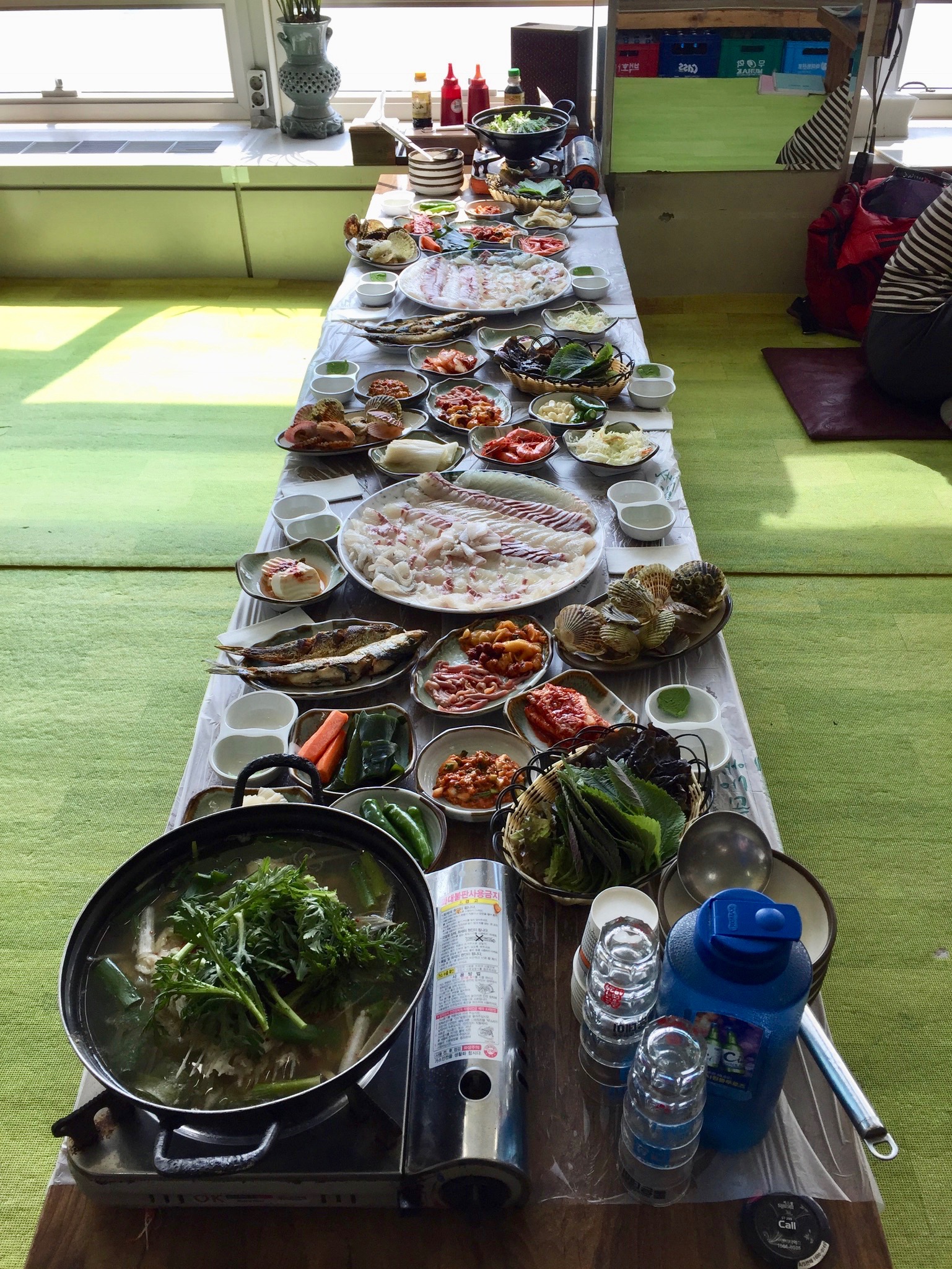
A fresh, flavorful feast (Photo: Patricia Cambel)
My few attempts to avoid the menu and just point to our neighbors’ feast only led to confusion, so I gave up asking, not wanting to be charged for accidentally ordering raw mystery creatures that I would then feel compelled to eat, so as not to offend, especially after I became pregnant with our second child.
New dishes still found their way to our table, through suggestions from waitresses, like one who picked up our crab skeleton and asked, “Bibimbap?” Knowing we liked rice all mixed up, we said yes, and continued the tradition thereafter, stuffing ourselves with the savory rice, cooked in the crab’s juices, at the end of each meal. Sometimes, we received free gifts, like raw octopus, served with the tentacles still wriggling on the plate, an experience I never partook in, blaming the baby blossoming in my belly, but Tom grew to enjoy the experience – the salty sesame oil combined with the strange sensation of suckers attaching to his tongue before he chewed and swallowed.
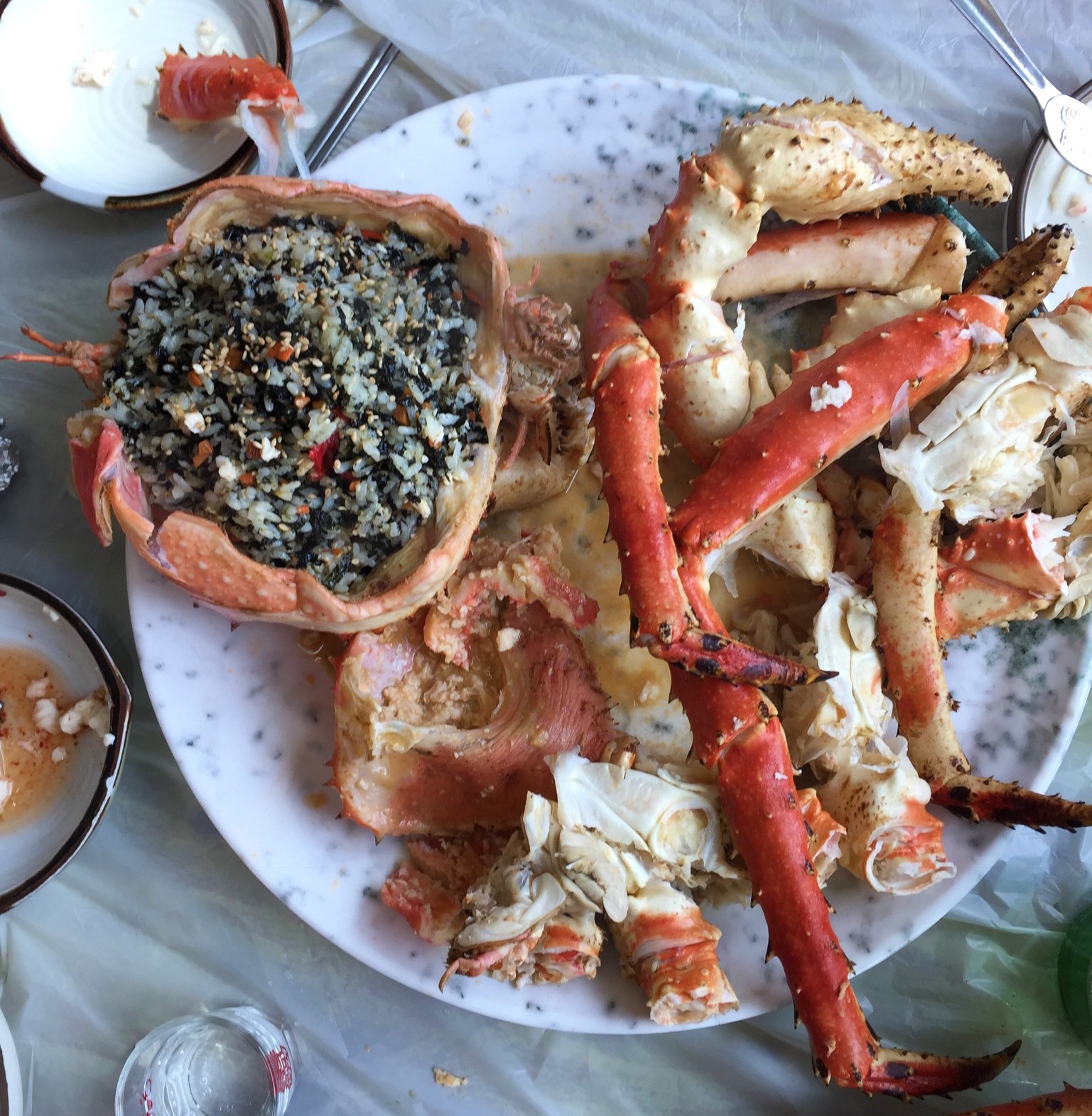
Make the most of leftover juices with crab bibimbap (Photo: Patricia Cambel)
While we met new foods, we never had a chance to connect with the busy vendors and servers, beyond pointing and ordering, then saying, “Kamsahamnida” as we waved goodbye.
With our toddler in tow, though, words were not necessary. Communicating sans language is a child’s superpower. All Emi had to do was walk near a tank, and the fish monger would approach her smiling, talking animatedly in Korean, or saying a simple, “Hello.” On more than one occasion, the fish monger pulled a small octopus out of a tank and placed it in Emi’s little hands. I watched anxiously, wondering how she would react, until her eyes peered up at mine, expanding with delight as the long, skinny tentacles squirmed in her hands, slipping through her fingers. Then, the vendor, Tom and I would share a laugh, as Emi played with the creature in her hands and giggled too.
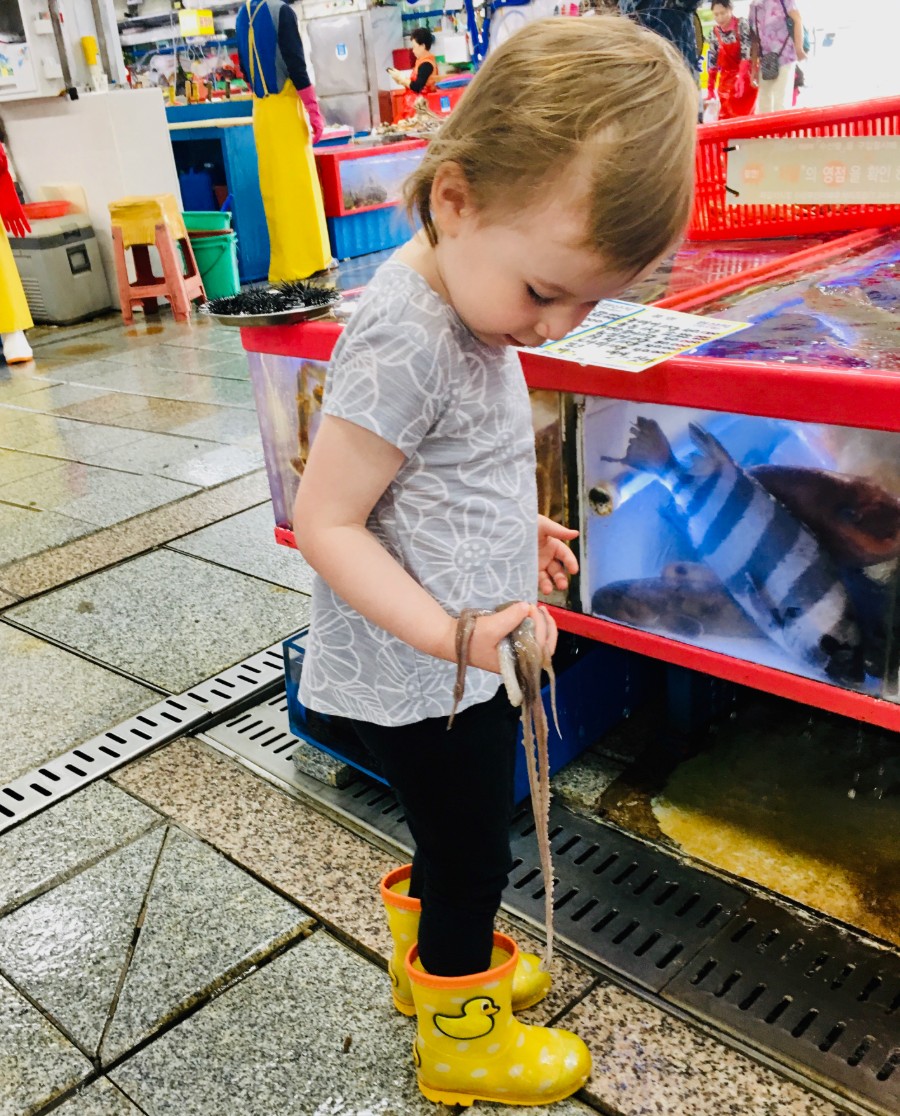
Emi clutching a slippery octopus (Photo: Bre Power Eaton for TravelMag.com)
Once, to my surprise, a vendor dipped his hand into a tank, pulled out that beige finger-like creature, and placed it into my toddler’s ready hand. Tom and I exchanged glances, widened eyes and stifled chuckles, simultaneously amused and distraught by the image of our three-year-old holding the likeness of a mini-penis in her hand.
Then, the man gently took her hand and squeezed it, spraying an arc of water onto the ground. Emi laughed and stared in wonder. The man leaned backward into a belly laugh we joined in on, as she giddily sprayed the floor again, wielding her new, squishy little friend.